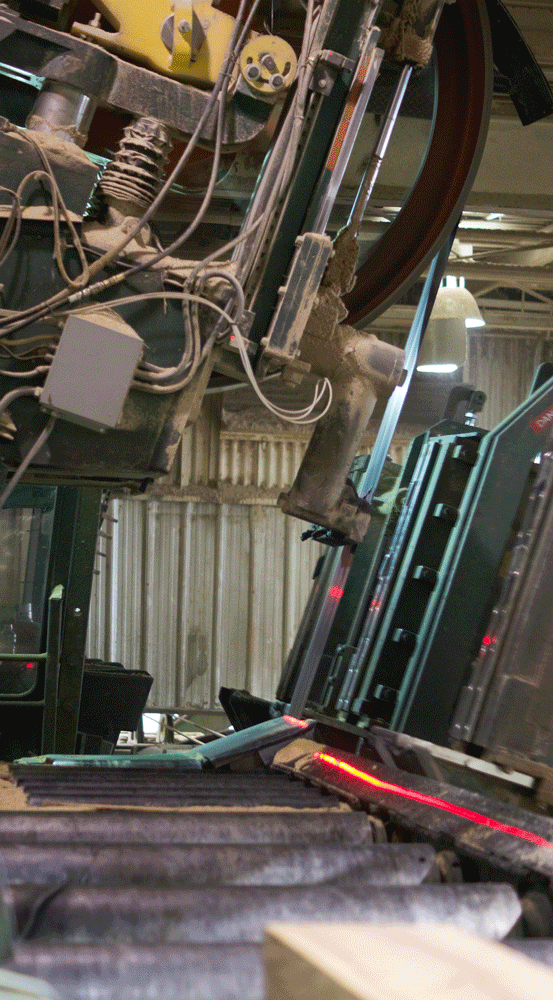90,000 board-feet of quartersawn wood produced every day.
In keeping with our reputation as a premier hardwood lumber supplier, we use the most cutting-edge, sustainable hardwood production practices.
How We Make It
Timber Selection
Frank Miller Lumber relies on independent log producers for their timber. These experienced log producers work with the Frank Miller Lumber procurement team, utilizing best-management logging principles to ensure the forest ecosystem continues to support the forest products industry in a responsible way.
Individual trees are selected for harvest, encouraging forests to renew and regenerate themselves naturally. For every hardwood tree harvested in the United States, 2.1 trees take its place through natural regeneration.

Once in the log yard, we employ state-of-the-art technology and proprietary processes to fully capture the wood’s distinctive beauty and its unique structural characteristics.


Quartersawn Hardwood Production
- The head saw operator employs a 120º high-tech scanner to determine the optimum position to make the first saw line in the log. Production information such as log count, board footage sawn and related statistics are captured by the log scanner.
- The log is separated into quarters, or “quartered,” and moved to the resaw area. There, one of two re-saws slices alternating faces of the quartered log from the inside-out while turning it end-for-end on a carousel between each pass through the saw.
- Once cut from the quartered logs, these quartered boards are then subjected to the industry’s highest standards of quality assurance. A computerized optimizing edger cleans the edges of each board for maximum grade yield.
- After each quartersawn board is double-end trimmed, the lumber flow continues to an advanced control system that provides length, width and thickness data to assist Frank Miller Lumber trained lumber inspectors in applying the proper grade to each board. This system also tracks each board through the drying process, archiving its history for future reference along with accurate production and yield records.
- Once measured and marked, the boards travel down the grading chain where they are stacked in designated bundles before going to the sticking department. There, profiled drying sticks are placed at 12 or 24 inch intervals on each layer of boards to allow air movement between layers while maintaining the lumber’s flatness during air and kiln drying.
- The drying process can take from 35 days to as long as eight months, depending upon the species and thickness of the hardwood.
- After pre-drying, the lumber is placed in a computer-operated kiln. Each kiln charge is electronically controlled to achieve a finished moisture content of between 6 and 8% per species and thickness.
- After kiln drying, the hardwood boards are re-graded and sent to the warehouse for accurate identification and storage.
We are a “zero-waste rated facility,” consuming every part of the log. All of its by-products in the manufacturing process are sold as useful products.
Product Consistency
Once kiln dried, each board is scrutinized and re-graded before being sent to the warehouse and deemed worthy of shipment to Frank Miller Lumber customers.
Frank Miller Lumber’s grading inspectors are trained in-house and are among the industry‘s finest and most experienced. These highly professional inspectors ensure a precise grade and quality evaluation of each board.

